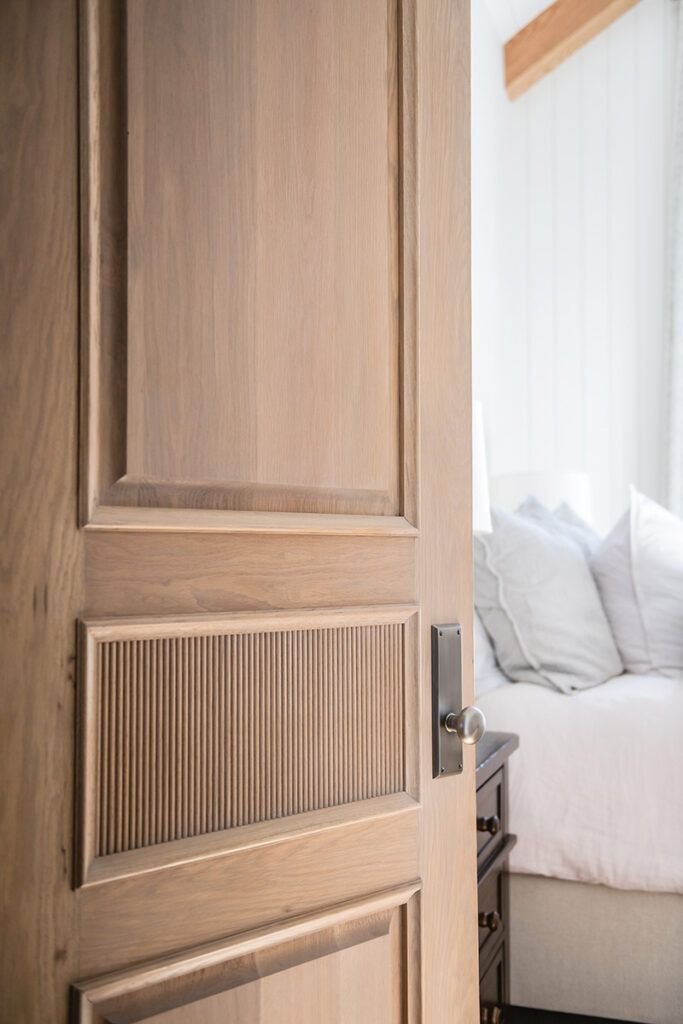Designer Tips- how to bring character and custom details to a stock standard new home
A stunning custom build designed by Studio McGee
There’s nothing quite like a beautiful old home which tells the story of times gone by and where no two are the same. Crafted from quality materials like bricks, stone and timber, they are made to stand the test of time. When we moved back to Adelaide from Far North Queensland, I was so excited at the prospect of swapping Queenslanders for an old bungalow or villa native to South Australia, with glorious high ceilings and fireplaces that just needs a little love & reimagining to give it new life.
Unfortunately for me, my husband has a mould allergy which means we need to either live in a new home or rip apart an older home and inspect it from roof tile to underfloor and everything in between to ensure he won’t be affected. And even then it felt risky! So as my dreams of owning a historical home have slowly slipped away, I have come around to the idea that modern doesn’t have to mean boring and today I’m sharing 3 tips on how to bring that all important warmth and a bespoke feel to a stock standard new build.
01-Architectural Details
As always when it comes to design, it’s the finer details that count.
Skirting, cornices & architraves are perhaps not the first thing that you notice when you enter a home but collectively, they elevate a home in a big way. For those who aren’t clear on what’s what; skirting is where the floor and walls meet, cornices are the intersection of a wall & a ceiling and architraves are the mouldings around door and window frames. While they have a functional purpose, like to hide where joins meet, they are also an opportunity to cast a distinct style for the home. There are so many different profiles available- meaning thickness, shape & mouldings, and like any selection they should be chosen to reflect the home and homeowners style. When it comes to a new, basic build, sometimes it takes swapping out a thin, flat skirt for a thicker design with a moulding detail to really elevate the home to feel custom & grand.
Considered architectural details elevate this beautiful hallway by Kymberlea Earnshaw Design
02- Doors & Hardware
First impressions always matter
A lot of new builds favour the use of standard flat MDF doors as they are cheaper & mass produced. Swapping them out for doors with moulding details goes a long way in making an impression before entering any room. Even better, replace lightweight doors with a solid timber construction to add texture & dimension, or add a steel glass door to amp up the luxe factor whilst bringing in more natural light.
Just like the right jewellery with an outfit makes the world of difference, the hardware on a door is the cherry on top of the overall look. There are so many options out there; black, brass, antique brass, chrome, gunmetal, brushed nickel, backplate, no plate, square, long- the list goes on! Here lies an opportunity to choose materials with interesting etchings or patinas to draw the eye and create a sophisticated, custom look. And don’t forget to match the hinges to the hardware!
Beautiful oak doors with a custom reeded panel detail by Lucca Design
03- Window Treatments
Where function & form meet
In a lot of Australian new builds, roller blinds are the go to, usually made from PVC fabrics and although they are practical to block out light in bedrooms, they can feel stark and generic. Upgrade these standard inclusions for a waterfall roman blind to keep the practicality but create dimension and movement along with a subtle hint of texture. They can then be layered beautifully with a long, draping curtain to softly frame the window. I love to use a natural, textural material like linen in a neutral shade to add warmth and a timeless elegance.
Waterfall roman blinds combined with linen curtains add to the designer look of this dreamy master bedroom by Studio McGee
Until next time,
Lottie xx




